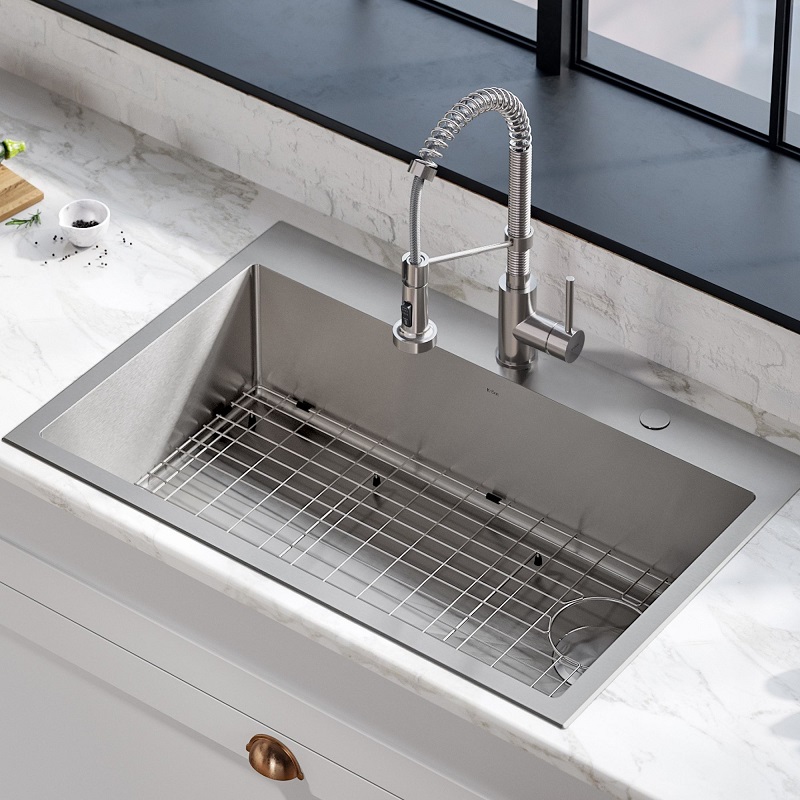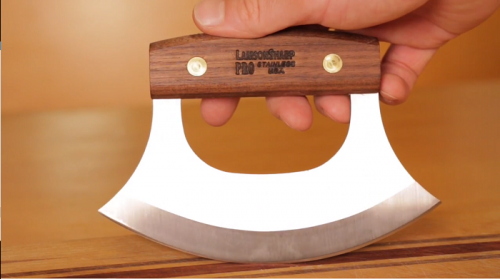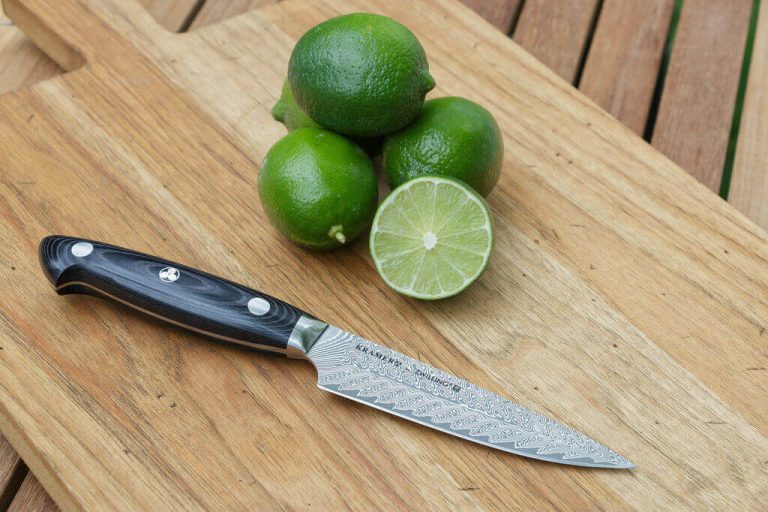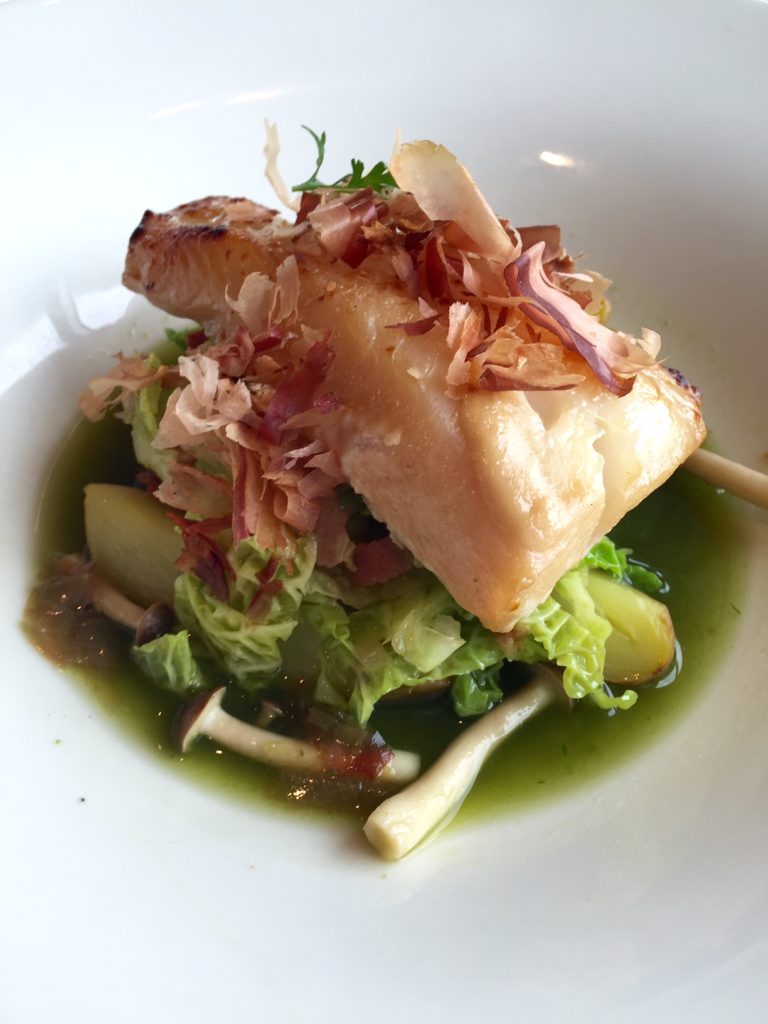A kitchen sink is a necessary purchase that homemakers make, as it is an essential kitchen accessory.
In this regard, stainless steel sinks are a cheaper option available in the market. There are many expensive options that you may come across while purchasing kitchen sinks.
The quality of stainless steel used in manufacturing the sink determines the cost of the sink.
The thickness or gauge of stainless steel appliances is another determining factor. The thicker the material more expensive is the sink. The low cost stainless steel sinks provide less resistance to corrosion and discoloration, but expensive sinks offer resistance to dents and scratches. They are more durable and have noise-reducing materials.
The overall type and size of the single bowl or double bowl and single drainer or double drainer is another component discerning the price.
For making the purchase, you need some additional information regarding the available alternatives in the market.
Various quality of stainless steel sinks floods the market
For household, kitchen sinks that are cost-effective and durable is a good option like 316 stainless steel. However, 304 provide the best value for money and is the most standard option.
On the other hand, 430 grade is a high-quality chromium stainless steel but lacks durability, resistance to denting, and flexibility. When you look into the design, several considerations may come into play, making you glance at different materials for style and color.
Many sinks these days come with the label “stainless”; however, it does not guarantee to prevent discoloration in the long run. The compounds and substances that manufacturers use differ significantly in the ratio and composition.
Steel is made up of iron and thereby will rust as the iron oxidizes on exposure to air. That is why manufacturers add metals to steel for providing anti-corroding properties
Stainless steel encompasses nickel, copper, magnesium, and other metals, but chromium’s presence prevents the steel from oxidizing and rusting.
Chromium also oxidizes, but without any discoloration. It also prevents air from getting into the iron underneath, thereby stopping iron from rusting. A thick layer of chromium will deter the sink from rusting.

Chromium is an expensive metal that eventually increases the price of the sink. However, the larger the proportion of chromium in the sink more durable it is against tarnishing.
The stainless steel sinks with chromium level between 10 to 12% are not of good quality. They are liable to discoloring, pitting, and rusting. Ideally, a standard stainless steel sink should possess 18% chromium. The expensive grades have chromium levels of up to 30%.
Along with chromium, nickel is also added to give additional flexibility and strength as steel is a delicate substance. The standard ratio of chromium and nickel is 18 and 8, where it offers the best strength and durability at the lowest prices and is known as 304 stainless steel.
It is durable, hygienic, and has good corrosion resistance. The next grade is 316, which encompasses 10% nickel, 17% chromium, and 2% molybdenum. The last component provides better corrosion resistance. Another quality of stainless steel is 430 grade, which includes 17% chromium. It is magnetic stainless steel, which people use in kitchens as a hygienic option for appliances.
The best gauge of stainless steel for kitchen sinks
The best gauge of stainless steel for kitchen sinks is 16 gauge, 18 gauge is cheaper, 20 gauge and above is a fragile option, and 14 gauge is thicker but not found in domestic kitchen sinks. Gauge is the unit for measuring the thickness of the steel.
The smaller the gauge, the thicker is the metal and vice versa. Hence, 22 gauge is the thinnest option in the industry and cheaper than 14 gauge stainless steel, which you may use for commercial purposes.
The thickness of the steel is very vital. Going for a thicker stainless steel sink will help you to ensure durability that will withstand heavy pans and pots, as well as wear and tear. The thickness of steel affects overall shine and longevity and so restaurants and cafes always go for expensive stainless steel, which ranges between 14 to 16 Gauge.
The possible ways to avoid corrosion and dislocation of the stainless steel sinks
The best way to avoid corrosion and dislocation of the stainless steel surface is by using chromium metal. However, molybdenum provides better security and anti-corrosion features. In addition to this avoiding, long term exposure to acid and salt on the surface will reduce corrosion.
Also, avoid leaving tea, coffee, and other staining elements on the surface for longer duration. Wiping the surface with a dry piece of cloth immediately after you finish washing may stop the crystallization of the water minerals.
Moreover, you may use commercial descaling liquid, which must get thoroughly washed down afterward. A very effective home remedy is a lemon and vinegar mixture, which may also help reduce discoloration and corrosion.
Ways to avoid scratching of stainless steel sinks along with renovating scratched surface
Scratch is inevitable even in the case of expensive stainless steel sinks. The mirror finish and shiny appearance are prone to scuffs. You may use a mild rubbing compound or commercial steel polishing compound for this matter.
Restoring dents and large deep dents are not possible. However, in the case of expensive stainless steel material, they are manufactured to be dent-resistant. The high-quality sinks have a bright and glossy polish, which protects it from small scratches and dents. However, paying extra for a kitchen sink does not guarantee resistance to scuffs and scores.
Good quality sinks like a Kraus USA workstation will have proper depth and a large area to enable washing without the risk of splashing water on the surrounding surfaces.
Sinks with drainers are an excellent option to use the drainage benefit without disturbing your budget. When looking for a durable and sturdy product, it is advisable to go for a more expensive option. You have to weigh the pros and cons of the options to make a good decision.







